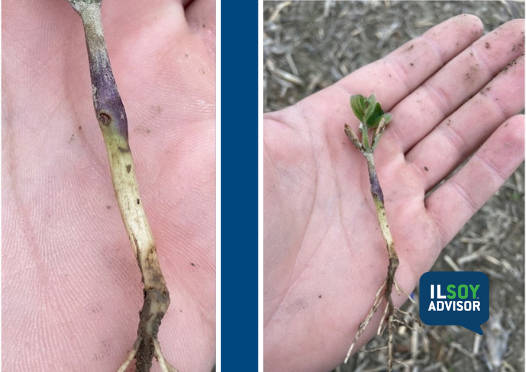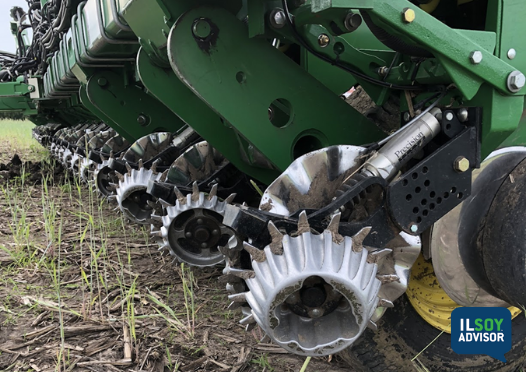ILSOYADVISOR POST
Agronomy: Soybean Inoculants: How to get the most bang for your buck
Today’s soybean inoculants are not the same as years past. The advancement and introduction of new products, low relative prices and changes to soybean production have led to additional research on the use of inoculants in our corn-soybean rotation. If purchasing a soybean inoculant (B. japonicum) or “rhizobia”, where might you get the most bang for your buck?
10. In the past, some research has shown that “long-term” drought, extending beyond 8 weeks, may warrant inoculant use. But, a recent study showed that soybeans won’t require an inoculant in a year following a drought.
9. If fields have been flooded for more than a week, rhizobia are deprived of oxygen, thus reducing their populations. But they can pop back again. And research indicates that a yield response isn’t guaranteed if you do inoculate.
8. The need for an inoculant may be greater in a sandy soil verses a medium- to heavy-textured soil. This is because lower populations exist in coarser textured soils.
7. What type of rhizobia strain is in your inoculant or does it consist of multiple strains? Newer inoculants have more effective nitrogen-fixing strains. If an indigenous rhizobia population already exists in the soil and has learned how to survive, it is difficult to replace it with a “better strain.”
6. Know the product. Newer inoculants are concentrated and provide from 500,000 to over 1 million rhizobia cells per seed and can be tagged with a fungicide/insecticide seed treatment. As an extra bonus, some inoculants come with carriers that enhance survival and have supplemental food sources, patented technologies for delivery and protection, and extenders.
5. Rhizobia must be present at high numbers at planting to ensure soybean nodulation. Inoculants are living organisms, and shelf life can vary so follow manufacturer recommendations. The application methods of inoculants and their stickers New inoculants have a higher survival rate (5 to 120 days), so they remain viable at planting.
4. Make sure soil conditions are conducive to inoculant survival and that the inoculant is compatible with other products used at planting. Rhizobia can be killed by desiccation, direct sunlight, heat, talc and contact with starter fertilizers. Check soil pH and EC (measure of salinity) before you even think about the addition of inoculant. Soil pH and salinity should be corrected and if it is too dry or wet at planting, effectiveness will be reduced.
3. In addition to your inoculant are you getting “extra goodies” such as biostimulants, biofertilizer or biopesticide properties that would increase yield? Know what you are buying, if you need it and if it will give you a return on your investment.
2. Diagnose nitrogen deficiency within soybeans. Very light green soybeans can be a sign of nitrogen deficiency; however, many other environmental factors such as dry weather, soil pH (near roads/lanes), root compaction, root diseases, SCN or other factors limiting root growth can cause similar symptoms. Inspect soybean roots to see if there are healthy nodules (8 to 14 nodules per plant) and if the nodules are pinkish in color when cut open.
1. In the past, the largest yield increases from the use of soybean inoculants has been in environments with low rhizobia populations (less than 10 cells per gram of soil). The general recommendation is to use inoculants when no soybeans have been produced for over five years. And sometimes there is no response seen with inoculants, even in the absence of long-term soybean production.
New soybean inoculants are now being tested across the Midwest, and the results vary. In some instances, research has shown a 1- to 2-bushel per acre yield response when new inoculant products are used within a soybean-corn rotation. On-farm research, such as replicated, side-by-side strip trials on a small amount of acreage over multiple years are suggested. If you begin to see a yield response, you may want to incorporate new inoculant technology into your farming operation.
Stephanie Porter is a Sales Agronomist with Burrus® Hybrids with responsibilities that include educating growers and Burrus staff on all types of pests, weeds, diseases and other agronomic issues that affect corn, soybean and alfalfa production. Her territory encompasses Southern Wisconsin as well as Northern, Eastern and Southern Illinois.




Comments
Add new comment